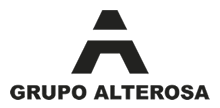




Notícias
30/06/2021 - Green Pig Iron
Green pig iron is an expression often used to distinguish and characterize pig iron whose production uses charcoal from planted, renewable forests as a reducing agent as opposed to pig iron produced from metallurgical coal.
This is a rather fair distinction as charcoal-based pig iron means sustainable production and compliance with environmental requirements.
Green pig iron requires extensive areas to be planted with fast-growing species. Every seven years, the length of each growth cycle, the trees are harvested and turned into charcoal.
As is widely known, all plant organisms grow through photosynthesis, a biochemical reaction that transforms water and carbon dioxide (CO2) into carbohydrates using light energy as a catalyst. Through this natural process, CO2 is sequestered and oxygen (O2) is released, which significantly reduce the impacts of greenhouse gases.
All plants carry out photosynthesis, but trees do it more efficiently because of their extensive leaf surface and relatively long life cycle. Living beings’ physiological activity is always more active in young organisms. A tree harvested at the age of 7 has spent its entire life removing carbon dioxide from the atmosphere and releasing oxygen.
Leaves and branches that fall to the ground during the tree’s life form an organic blanket that is gradually mineralized and incorporated into the soil where it remains indefinitely. In this sense, forests are a permanent carbon sink.
This balance is summarized in the table below:
CO2 BALANCE TO PRODUCE ONE TON OF PIG IRON
Source: Prof. Dr. Ronaldo S. Sampaio
| PIG IRON PRODUCTION - 1TON | Absorbs | Releases |
| Using biomass | 890kg de CO2 | 203kg O2 |
| Using coke | 990kg O2 | 1.750jg CO2 |
Based
on a seven-year forest rotation, which coincides with the period of a
tree’s greatest physiological activity, each hectare of forest
harvested means that another six are going through the process of
growth, removing CO2
and releasing O2
into the atmosphere in a sustainable production arrangement.
The amount of CO2 captured by a growing forest dedicated to the pig iron industry more than offsets the amount released by pig iron mills.
A recent study carried out by SENAI’s Innovation and Technology Center provided evidence that the balance is positive over the entire process, from tree planting to the production and storage of pig iron at the mill, including all support services, such as internal logistics by means of vehicles and machines, raw material transportation, and employee commuting. In short, the outcome is as follows:
Emissions: 2,049 kgCO2e/t (kilogram of equivalent carbon dioxide per ton) of pig iron
Absorption: 3,897 kgCO2e/t of pig iron
Balance: 1,848 kgCO2/t of pig iron.
Virtually all pig iron producers in Minas Gerais and Brazil use charcoal.
Source: SINDIFER / Foundry Gate
News
U.S. Dollar exchange rate
| Buying | Selling | |
|---|---|---|
| Commercial exchange rate (in R$) | 5.1013 | 5.1019 |
| Tourism exchange rate (in R$) | 5.1422 | 5.3222 |
| Source: | UOL Economia | |
Useful Links
Read the news about the pig iron industry in Brazil and across the world.
Our location
Rua Pequi, 189 - Santos Dumont
Pará de Minas | MG | Brazil
CEP: 35660-308
Telephone: +55 (37) 3232-0800
WhatsApp: +55 (37) 99820-9444









